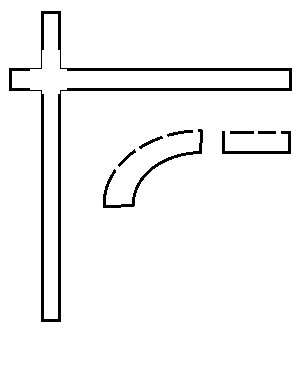Designing Runway Headings and Length
| ✅ Paper Type: Free Essay | ✅ Subject: Architecture |
| ✅ Wordcount: 2181 words | ✅ Published: 23 Sep 2019 |
Runway Headings and Length
One of the most important aspects of airport design is the layout, orientation, and length of runways. In most cases, these are dictated by prevailing winds, available space, and runway required for operation of specific aircraft. However, where freedom is allowed, good, flexible runway planning can pay dividends for an airport throughout its life. Poor decisions in runway design can prevent the development of an airport or become a detriment to the airport’s day-to-day operations.
Considerations and Topics on the Design of Runways
Reference Codes
Both the International Civil Aviation Organization (ICAO) and the Federal Aviation Administration (FAA) have their own, unique classification schemes to develop reference codes for aircraft and airports. These codes are useful for determining runway length and other design considerations around the airport, such as runway orientation or taxiway separation (de Neufville, Odoni 2013).
Aircraft. The ICAO reference code system consists of a code number and code letter. The code number is determined by airplane reference field length — the minimum field length necessary for takeoff at maximum takeoff weight (MTOW), at sea level, under standard atmospheric conditions, without wind, on a level runway. The code letter is determined by the aircraft’s wingspan and span between the outside edges of the aircraft’s main gear, or OMG span.
The FAA, on the other hand, has a reference code consisting of a letter and a Roman numeral. The FAA’s system, first, uses aircraft approach speed to determine the aircraft’s approach category, the letter element of the code. Then, the aircraft’s wingspan and tail height are used to determine the aircraft design group, the Roman numeral element (de Neufville, Odoni 2013).
Airports. The ICAO and the FAA use the same criterion for determining airport reference code (ARC): the most demanding type of aircraft the airport is designed to serve. The code is not relevant to what aircraft the airport is currently serving, but rather what aircraft it has the capacity to serve. These codes directly relate to appropriate aircraft reference codes.
Each system, unsurprisingly, has different naming schema. For example, in the ICAO system, an ATR 42-500 is a “2-B,” while in the FAA system, the same aircraft is labelled a “B-III.”
Criterion for Determining Runway Length and Orientation
FAA and ICAO aircraft reference codes are often utilized in determining a runway’s necessary length, along with other factors such as aircraft’s MTOW, aircraft’s MLW, local wind and weather patterns, distance to be flown, field elevation, runway gradient, and manufacturing specifications.
Weight. When discussing weight in terms of determining runway length, two factors must be considered: weight of the aircraft and distance to be flow, or stage length (de Neufville, Odoni 2013). Heavier aircraft will take longer to get to the speed necessary for lift and will, appropriately, have higher takeoff speeds than lighter aircraft. Large aircraft will also generally require longer distances to stop than smaller aircraft. Additionally, aircraft that are flying longer distances will generally have more fuel than if they were flying shorter distances, making them heavier.
Wind. The key consideration necessary for determining runway orientation is wind coverage. For optimal safety and performance, it is best for aircraft to depart and arrive into the prevailing wind. Therefore, it is logical that airports often orient their runways in order to have aircraft takeoff and land into the wind the highest percentage of the time. While having multiple runways can increase the complexity of airports, having multiple runways may be necessary for some airports especially prone to crosswinds or in other situations where one runway may not appropriately allow aircraft to operate into prevailing winds.
From Section 9.3 in Airport Systems, both “the ICAO and the FAA recommend that the number and orientation of runways should be such that crosswind coverage…is at least 95 percent.” Along with that recommendation, the FAA sets fairly conservative requirements for crosswinds dependent on the FAA reference code of aircraft operating at the airfield. Airport planners utilize historical wind data to create optimal runway orientation and layouts that would satisfy these requirements as summarized in a wind rose chart.
Weather. Aside from wind, general weather patterns can play a significant role in the designing of runways, specifically the length of runways. Higher temperature areas, such as Phoenix, would be inclined to build longer runways than an airport such as Minneapolis. Higher temperatures reduce the density of air, which means aircraft have to gain more speed and use more runway in order to achieve the lift necessary for takeoff. Conversely, lower temperatures increase air density, meaning aircraft could take off in shorter distance as they would require less speed to achieve that necessary lift.
Additionally, common adverse weather patterns, such as rain and snow, can motivate airports to build longer runways as safety measures against the potential poor or nil braking action aircraft may experience in those conditions. A rule of thumb, according to Airport Systems, is that required landing distance should generally increase 15 percent for wet runways.
Gradient. At many airports, runways are not perfectly level. As gradient increases positively, aircraft will require more power to go upward in elevation, requiring more runway to get to an appropriate speed for takeoff, as some of the power output by the engine will be used to overcome gravity pulling the plane backwards. Advantageously, aircraft can use downward gradients to get up to speed faster and use upward gradients to decelerate faster. However, this can create situations where aircraft are unable to depart if wind conditions are unsuitable. As a rule of thumb, Airport Systems suggests every 15 ft. of difference between the high and low points of a runway will require an additional 150 ft. of runway length.
Elevation. As elevation increases, the density of air lowers, again necessitating the need for longer runways. At Prescott Love Field in Prescott, AZ, at an elevation of roughly 5,200 ft., a 7,000 ft. long runway cannot support more than a CRJ-200, a small, twin-engine regional jet. Meanwhile, John Wayne Airport in Santa Ana, CA, at an elevation of 56 ft. can support aircraft such as the Airbus A300, a wide-body freighter, despite having a runway that is only 5,700 ft. long. Large airports, such as Denver International at an elevation of 5,400 ft., have adapted by having very long runways — all 12,000 ft. in length or greater. A rule of thumb, according to Airport Systems, is that required landing distance should generally increase 7 percent for every 1,000 ft. increase in elevation over sea level.
Types of Runway Layouts and Orientation
The number and orientation of runways ties to several factors relevant to the operation of an airport. Terminal location, relative to runway placement and departure/arrival runways, affects how many aircraft an airport can handle in total and per hour. Position of runways, departure and arrival routes, and crossings also affect the rate at which an aircraft can process flights. As noted in Airport Systems, size of an airport does not necessarily correlate to the amount of flights processed, and longer runways, more runways, or different configurations does not necessarily change that figure.
 Single. This configuration is one of the simplest forms of airport layouts. Airports can take this configuration for a variety of reasons such as lack of traffic (say a general aviation focused airport) or lack of space (such as San Diego International). Most facilities at this airport are generally at one side of the runway or the other, commonly being focused to one side to conserve space. Such configurations can provide benefits in their simplicity however, they commonly constrict and stunt an airport’s development and rate of aircraft movements. The runway must be used as both a departure and arrival runway in this configuration.
Single. This configuration is one of the simplest forms of airport layouts. Airports can take this configuration for a variety of reasons such as lack of traffic (say a general aviation focused airport) or lack of space (such as San Diego International). Most facilities at this airport are generally at one side of the runway or the other, commonly being focused to one side to conserve space. Such configurations can provide benefits in their simplicity however, they commonly constrict and stunt an airport’s development and rate of aircraft movements. The runway must be used as both a departure and arrival runway in this configuration.
Figure 1. A single runway configuration.
Parallel. For airports with the opportunity to expand, a parallel layout can have many benefits. For one, parallel layouts can increase the number of total operations and operations per hour at an airport without greatly affecting the job of a controller as many configurations, by design, separate aircraft a safe distance from each other. Additionally, runways can specifically be used for arrivals and departures, such as in Figure 2, reducing the possibility of runway incursions between arriving and departing aircraft. Other airports may use parallel runway configurations to separate large, fast jet traffic from smaller, slower general aviation traffic, such as in Figure 4.
The distance between two runways can affect, both positively and negatively, operations at the airfield. Close parallel runways, such as in Figure 3, may force an airport to create special operating restrictions and can create potentially hazardous wake turbulence situations between aircraft operating on either runway. Independent parallel runways, such as those from Figure 2, can allow the airport to develop landside facilities in between runways, while the close configuration of Figure 3 forces the airport to place its landside facilities on the edges of the runway, similar to a single runway configuration (de Neufville, Odoni 2013).



 A disadvantage in both examples, however, is that aircraft arriving or departing must cross another active runway to reach the runway they need to use (de Neufville, Odoni 2013). Some airports, such as London Heathrow, only operate two, independent runways with landside facilities large in-between the pair, preventing aircraft from ever having to cross an active runway to go where they need to be. Active runway crossings, explained further in interesting runway layouts, slow down the flow of traffic, as aircraft must wait for a runway to be clear before crossing, landing, or departing.
A disadvantage in both examples, however, is that aircraft arriving or departing must cross another active runway to reach the runway they need to use (de Neufville, Odoni 2013). Some airports, such as London Heathrow, only operate two, independent runways with landside facilities large in-between the pair, preventing aircraft from ever having to cross an active runway to go where they need to be. Active runway crossings, explained further in interesting runway layouts, slow down the flow of traffic, as aircraft must wait for a runway to be clear before crossing, landing, or departing.
Intersecting. Many airports, especially those requiring more crosswind coverage, have runways that intersect. Depending on wind conditions, this can also allow airports to have separate departure and arrival runways, such as in Figure 4. Airports can have pairs of parallel runways that cross, Figure 5, or single runways that cross, Figure 6, or many other combinations of runway layouts depending on needs and available space. Intersecting runways, while potentially saving more space than an open-/closed-V configuration, come with the added cost of complexity and potentially decreased traffic volume per hour (Kennedy, 2015).
Intersecting runways introduce the possibility that two aircraft could collide on separate runways, unlike in any of the other layouts. Since it would be unsafe to depart or land an aircraft while another aircraft crosses their runway, aircraft must wait until separation exists between said aircraft. Waiting for aircraft to land, takeoff, or cross an active, crossing runway can lead to significant aircraft delays for both departing and arriving runways.
While crosswind coverage is increased, airports can suffer when wind conditions limit airports to the use of one runway, such as the singular departure/arrival runway in Figure 5. This challenge can generally be mitigated by the introduction of a parallel runway, also Figure 5.
Open- and Closed-V. V runway configurations are similar to intersecting runway configurations, except the two or more runways do not cross each other, eliminating on the ground active runway crossings. Open-V layouts generally have aircraft land and depart away from the point of the “V” or the closest point of the runways, Figure 6, while closed-V layouts generally have aircraft operate towards the point of the “V,” Figure 7. Diverging, open-V patterns are generally more efficient as aircraft do not have to worry about crossing flight paths (Kennedy, 2015). In a closed-V, controllers must be conscious of aircraft departing or going-around on either side of the V as their flight paths cross one another.
 V oriented runways have the advantage of either using both sides with a light crosswind component or just one side of the V at a time, depending on local wind conditions. In other words, open- and closed-V configurations give airports the advantage of increased crosswind coverage while eliminating problems stemming from active runway crossings found in intersecting layouts.
V oriented runways have the advantage of either using both sides with a light crosswind component or just one side of the V at a time, depending on local wind conditions. In other words, open- and closed-V configurations give airports the advantage of increased crosswind coverage while eliminating problems stemming from active runway crossings found in intersecting layouts.
Figure 6. Two, single runways in an open-V configuration.
 Figure 7. Two pairs of parallel runways in a closed-V configuration.
Figure 7. Two pairs of parallel runways in a closed-V configuration.
Conclusion
In planning runways, planners should be mindful of many topics. Planners should first consider available area and prevailing wind conditions, as a runway may not be able to be built at all if space does not exist in an area or direction that could properly allow for operation into prevailing wind. Planners should then consider what kind of aircraft will be flying into the airport, or what kind of aircraft they eventually hope to see at the airport. Additionally, one should consider the location of the airfield, and how weather systems or field topography may affect aircraft performance. Planners should also take into consideration potential traffic procedures and volume, and whether or not their airport layout would optimize space or optimize flow.
References
- Kennedy, R. J. (2015). Four runway configuration types and their relation to arrival delays (Unpublished master’s thesis). Purdue University. Retrieved February 1, 2019, from https://tinyurl.com/y8nvlj6l
- de Neufville, R., & Odoni, A. (2013). Airport Systems: Planning, Design, and Management, Second Edition. McGraw-Hill.
- United States, Department of Transportation, Federal Aviation Administration. (2005). Runway Length Requirements for Airport Design (AC 150/5325-4B).
Cite This Work
To export a reference to this article please select a referencing stye below:
Related Services
View allDMCA / Removal Request
If you are the original writer of this essay and no longer wish to have your work published on UKEssays.com then please click the following link to email our support team:
Request essay removal


